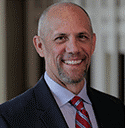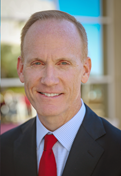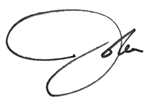Harry S. Dent Jr.'s Blog, page 96
November 22, 2016
How Unpredictable Will the Crack Heads be About Italy?
 Italy has a major referendum on December 4, the results of which could mark the start of an Italian exit… yet U.S. and most global stocks keep going up. They shot higher after a brief Brexit breakdown. They zoomed higher still after an even shorter Trump slump. Shock after shock is having no impact on markets. They just keep heading on up.
Italy has a major referendum on December 4, the results of which could mark the start of an Italian exit… yet U.S. and most global stocks keep going up. They shot higher after a brief Brexit breakdown. They zoomed higher still after an even shorter Trump slump. Shock after shock is having no impact on markets. They just keep heading on up.
What do you think? Would a crack-addict be realistic about his or her chances of surviving a jump off a roof?
Polls are telling us that this referendum for constitutional reform by Prime Minister Renzi is likely to fail. “NO” is likely to win the day.
Of course, the polls haven’t exactly been a shining light of late… so we’ll see. But have you noticed how these events have tended to favor the far right and exit policies rather than the centrist and unifying parties?
Renzi has vowed to resign if “NO” takes the day and that opens the way for the far-right party to take over and move towards removing Italy from the euro and/or Eurozone, à la Brexit and Trump. And it’s the only way Italy can devalue, default, rebalance, and have a chance of coming out of its debt crisis – at the price of high short-term inflation, of course.
Right off the bat, they could default on their Target 2 loans, largely to Germany, of $344 billion. In total, the weaker Eurozone countries owe Germany $676 billion! So if Italy leaves the Eurozone, the impact would be way worse than anything we’ve seen (and will see) with Brexit.
The stock markets might have moved higher after Brexit and Trump… but what they’re missing is this…
They don’t yet appreciate that Brexit marked the beginning of a major anti-globalization movement that was seconded by the Trump victory. More importantly: Italy is the “death knell.”
Greece was bailed out because it was small enough and Germany and the European Central Bank (ECB) didn’t want to create a reaction of more euro exits in response if Greece was forced to exit.
But Italy isn’t small enough. In fact, it’s too big to fail… and to bail out. It’s the third largest country in the euro and the fourth largest in Europe. If it fails, all of Southern Europe will likely follow.
Italy’s stock market is already telescoping a major collapse in Italy, as is recent trends in its Sovereign bonds that have spiked a bit more than all the rest.
Look at Italy’s main stock index.
 Italy and Southern Europe stocks peaked back in 2000, as did the Stoxx 50. Italy has only seen lower highs and lower lows since then and that is the most bearish of patterns!
Italy and Southern Europe stocks peaked back in 2000, as did the Stoxx 50. Italy has only seen lower highs and lower lows since then and that is the most bearish of patterns!
Italy’s market is presently down 65% from its all-time highs in 2000, and has been down 73% at its worst in early 2009.
It’s been in a long trading range since late 2009 that would be broken to the downside if it broke below 12,000. Should that happen, the projection would be down to near zero!
Does that sound like a totally bankrupt country or what?
Only a break back above 25,000 would be re-assuring… and I see almost no chance of that happening.
I’ve been warning that Italy is already bankrupt. It’s government debt is beyond 135% of GDP. And its biggest problem is its 18% and rising non-preforming bank loans. Normally, 10% indicates bankruptcy.
So why don’t Italian 10-year Treasuries rise back to the 7.2% yield spike they saw into late 2012? Because Mario Draghi keeps buying them (and others) like crazy. And he continues to threaten to buy more to kill any short traders.
Can you say “rigged market?”
But since August, rates have followed rising 10-year Treasury rates, which have risen 100 bps (basis points). They’ve risen 120 bps from 1.03% to 2.23% in just three months. We’re going to see rates rise to 10-20%-plus in the next year or so as Italy finally defaults!
Italy is the next Greece and there’s no way to bail it out, especially with Germany having a slower-than-expected economy (although it’s not unexpected to me… my demographic models forecast this slowdown long time ago, and it sees Germany facing the greatest decline of any country into at least 2022).
If Italy does exit, it will spell the end of the euro and Eurozone as it is.
The markets reacted irrationally to Brexit and the election of Trump, just as any crack head would. And, just like any crack head, they’re hard to predict in most instances but one: they’re always making the wrong decision.
My dear friend, Andy Pancholi of the Marketing Timing Report, has a major turn date around December 9. It’s likely the markets will turn down into the Italian referendum at first and then they could either accelerate down, or turn up one more time if it surprisingly passes.
This is an important time period to watch and to recalibrate investment strategies. Stocks continue to be harder to predict as they’re the most manipulated by QE policies and the last place for investors to go in a zero or negative rate environment.
We’ve been dead right about a spike in Treasury bond rates, a continued rise in the dollar, a continued fall in gold after a bounce to near $1,400, and a fall again in oil prices after a bounce over $50.
Hopefully this “market on crack” will become more predictable between now and December 4!
Stay tuned.

Harry
Follow me on Twitter @harrydentjr

The post How Unpredictable Will the Crack Heads be About Italy? appeared first on Economy and Markets.
November 21, 2016
No Excuses!
 As you know, I’ve been talking about a turn higher in long-term interest rates for going on two months now, while Harry has been talking about the “Fixed Income Trade of the Decade” since last November.
As you know, I’ve been talking about a turn higher in long-term interest rates for going on two months now, while Harry has been talking about the “Fixed Income Trade of the Decade” since last November.
As rates have indeed moved higher, Treasury Profits Accelerator subscribers have been profiting nicely! Now, this might not be the trade of a decade but we are up well over triple digits (so far), ever since my system alerted us to a trend change in early September! Not to mention Boom & Bust readers who have seen a healthy 20% gain on a similar trade.
Right after Trump was declared the winner, Harry warned that rising interest rates are signaling that central bank policies of QE and negative rates are failing. He went on to say that 10-year Treasury bond rates could spike as high as 3.1% in early 2017 (rates that already surpassed his near-term target of 2.25%).
Trouble abroad, trouble at home
With all the international risks to the markets such as the German and Italian banking crisis, Brexit, and the Chinese real estate bubble still front and center, a spike in interest rates could spell disaster for stocks right here at home.
When rates rise it’s more costly for companies to borrow and for customers to finance purchases. You might’ve heard my colleague John Del Vecchio bang the drum in Forensic Investor over companies borrowing cheap money so they can buy back their own stock to keep stock values high even if revenues aren’t. When consumers have to pay more to finance purchases, sales will suffer. Corporate valuations are already high based on earnings so it won’t take much of a rise in interest rates to tip the scales (and Rodney talked about this in the November Insight Video).
Central banks around the world are beginning to reconsider expanding their stimulus programs and may need to start tapering. The Fed promised early in 2016 that there could be possibly four rate hikes this year, but haven’t pulled the trigger on even one hike yet.
But with the way rates are moving, the Fed may be backed into a corner and have no choice but to raise rates next month. The market has already priced in a near-certain rate hike.
The Fed’s dual mandate from Congress – to promote employment and price stability – shouldn’t be a big concern for now. Jobs and wages have crept higher over the last year. Even as job growth has slowed, wages have continued to move steadily higher. The Fed is closing in on its inflation target of 2%.
Of course, the risks I mentioned earlier still remain and if rates were to tick higher yet, that could trigger a stock sell-off. And if that happens, the Fed will likely be off the hook to raise rates. In fact, they could be tempted to ease the quarter point they hiked last December.
What comes next
First things first, though. Between now and December 14, there are only a few data points the Fed will be scrutinizing in making their decision.
October new home sales are important because of the ripple effect new home sales create on the economy. Not only are real estate, mortgages, and construction affected by sales (or lack thereof), but new home sales flow to appliance sales, furniture sales, landscaping and other home items.
Keep in mind that rates didn’t really take a jump until the last week of the new home sales report so we won’t see the effect of higher rates until the November report is released in January. If sales slow, we could see a much bigger slowdown in January.
The Fed’s main inflation gauge is the Bureau of Economic Analysis’ Core PCE Price Index that will be out with the October Personal Income and Outlays report. The September Price Index hit 1.7% but has been climbing with rising wages. If we see a tick higher in this report, there will be no excuse from the Fed not to hike.
And unless there’s a big miss in the November Employment report, the Fed will have no choice but to hike rates. The unemployment rate has been at or below 5% for a year. Wages have been on the rise for several months. Sure, quality of jobs is a big question mark but rising wages signal improvement here.
Finally, November retail sales will be reported on decision day for the Fed. November’s report is more important than most since it includes the start of holiday buying and will signal how profitable retailers may or may not be for the year.
So, if one of the many market risks don’t trigger a stock market sell-off before the next Fed meeting, there are only a few excuses the Fed can make to not hike interest rates. If the Fed hikes rates, that could prompt other central bankers to start to taper their stimulus programs.
Remember the sell-off in U.S. stocks after the Fed announced their plans to taper QE? The S&P 500 lost about 10% in a month!
Remember what happened after the Fed hiked last December? The S&P 500 lost nearly 12% in a little more than a month!
We’re now near record highs in the S&P 500, again. The Fed is ready to hike again so what might happen this time?
Be ready for what the Fed is about to do and look out for Harry’s “Fixed Income Trade of the Decade,” it could be right around the corner.
Whatever the Fed may or may not do, it doesn’t really matter. Overreaction to volatility in long-term treasury bonds is another way Treasury Profits Accelerator subscribers profit.

Lance

The post No Excuses! appeared first on Economy and Markets.
November 18, 2016
Who Wins and Who Loses in a Global Trade War?
 My research in recent months has focused increasingly on how the surprise Brexit vote and Trump’s victory are actually not that surprising after all. They’re a clear sign of a growing number of everyday people rejecting the massive globalization trend that has surged since World War II.
My research in recent months has focused increasingly on how the surprise Brexit vote and Trump’s victory are actually not that surprising after all. They’re a clear sign of a growing number of everyday people rejecting the massive globalization trend that has surged since World War II.
The world “shrinking” seemed to be a win-win at first. Countries could focus on what they do best and export to others while importing what they need. And, yes, longer-term that does work, as Adam Smith first espoused in 1776.
But there’s a catch, as Australian Steve Keen, one of those rare economists who truly understands how the world works, says. That is, you can’t just switch from one major industry to the other without some major costs to infrastructures and labor unemployment. So once you’ve set off down a particular path of specialization, there’s really no turning back.
You can’t turn a steel mill into a semiconductor factory, or at least not without major retooling and costs. And the skills that staff must possess to work in each kind of plant differ wildly.
In short, specialization of labor is good, until it turns bad. So too, globalization has been an economic boon, until now…
We’ve reached that point where it’s time for a reset before we can progress once again.
Global trade, just like any other trend, surged and has now hit its limits. It must reset and consolidate before it can resurge again.
This is the nature of any cycle!
And as you can see…

… globalization has reached its second peak, so the backlash against it is a natural progression in this cycle.
That’s not to say globalization is dead. It is very much alive, and will continue after this looming reprieve. After all, we’re only 52% urban now compared to where we were in the mid-1850s. But no surge has the steam to move perpetually.
The first globalization surge peaked in 1912 as World War I hit. The second boom only started after the end of World War II. That means, for 33 years, globalization retreated. And as you read this, we’re heading into the next great retreat.
There is no arguing that there’s a revolt of everyday workers in the developed world against globalization – not just Brexit or Trump America. Fractures along religious, political, racial and gender lines have turned into fissures.
The question now is: Which countries will be hurt the most by another protectionist era and sharp contraction of global trade?
Well, that depends on which countries rely most on exports rather than domestic and internal demographic-driven demand for their growth? Basically, those with the greatest, most focused, specialization of labor.
Here’s how 30 major countries rank on exports as a percent of GDP.
 Look at the “ugly” group – the greatest losers in a global trade war…
Look at the “ugly” group – the greatest losers in a global trade war…
Hong Kong;
Singapore;
Vietnam;
Belgium;
The Netherlands;
Malaysia; and
Switzerland
The rest of Europe, East Europe and the Middle East make up most of the “bad” group. They have higher than average exposure compared to the global average, which is 30% exports to GDP.
The least exposed group starts with Italy and moves down to the very least at risk being the U.S. at 13% and Brazil at 12%…
Just another notch in our belt as the best house in a bad neighborhood. And it’s another reason the U.S. dollar will rise in at least the early stages of the next global financial crisis.
In short, most countries lose in the developing trade war (just like what we saw from 1913-1945). But some do better than others, as is natural in the shakeout phase in any longer-term cycle. The U.S. comes out the best on this measure in the developed world, and the U.K. and France better than most of Europe. Brazil and India come out the best in the emerging world.
The battle lines are drawn. Are you ready?

Harry
Follow me on Twitter @harrydentjr
P.S. Watch this space over the next few weeks. We’re reopening access to our private, exclusive Dent Network, which gives you access to everything you’ll need to be ready for this global trade war.

The post Who Wins and Who Loses in a Global Trade War? appeared first on Economy and Markets.
November 17, 2016
Voting for Trump in Spite of Who He Is
 It’s hard to keep up with all the labels.
It’s hard to keep up with all the labels.
According to the mainstream media, anyone who voted for Donald Trump is a hate-filled bigot who objectifies women, can’t stand immigrants, denies global warming, has no education, and earns less today than he did in 1999. He must be resentful that a black man occupies the White House today and apoplectic at the possibility that a woman might do the same thing.
That’s a lot to carry around… and it’s not who I am… even though I voted for Trump.
But my vote really wasn’t for the man. It was for the possibility that his candidacy represents, and the chance to end some policies that I think a President Clinton would have continued.
In a very real sense, I voted for Trump in spite of who he is.
I wasn’t giddy as I filled out my absentee ballot. I considered the choice for a long time.
Is it the candidate who has zero experience, doesn’t really put forth a policy statement of any kind, says reprehensible things, and brags about declaring bankruptcy, or the candidate who moves to a state she’s never lived in simply to capture a Senate seat on her way to the White House, uses her position to build personal wealth, and then operates as if the rules we all must live by don’t apply to her?
When it came to personal failings – bombastic navel-gazing compared with an elitist lust for power – neither one represented what I think of as an ideal presidential candidate. But, one of the two would be elected, so the choice remained.
And arguably, even if I loved how a candidate lived his or her life, that shouldn’t be the test for occupying the Oval Office. I should evaluate how the person will shape policy, both foreign and domestic, and how they will inform the judicial system through court appointments.
I’m a small-government guy. I want decisions handled at the lowest level of civil organization possible. This means allowing states to govern as they see fit, and taking the federal government out of the picture in most, but not all, instances…
We are all people, bound to make mistakes. The more decentralized we are, the less opportunity people have to collect undue power, and the more likely we are to find innovative solutions to the problems before us through experimentation at the state level.
I believe we’ve granted government agencies excessive power through regulatory interpretation, creating an expensive maze for businesses that eats up far more capital and time than its worth.
And I think our tax and healthcare systems are dreadful. We spend tens of billions of dollars simply trying to prepare our tax returns, and everyone knows the state of medical care.
The president can mold these things. Through agency appointments, court appointments, direction given to cabinet members, and consent with Congress, the president can sway decisions in these areas in ways that I believe will unleash innovation, get government off the backs of businesses, and provide a solid foundation for decades to come.
A Clinton administration would, as illustrated by her policies, continue down the path we’ve been on since her husband’s time in office. More government intervention, more spending on programs that are insolvent, and new programs such as free tuition that address symptoms, not causes.
It appears that her team believes that elected officials know more, and know better, than those who are governed, hence the reason for such extensive regulation and greater government programs.
I don’t agree.
Finally, there is the question of special-interest groups. Trump seems to have few, if any. Perhaps this freedom will give him the ability to go after programs that have strong popular support, like ending carried interest tax treatment for hedge funds and providing school choice for kids that seem to fade away once lobbyists get involved.
President Trump, with a slight conservative majority in Congress, might be able to address some of the issues we face. Or he might be so unpredictable as to become a lame duck before the end of his honeymoon.
No matter what he does, I don’t think his election success was because of the caustic and irresponsible things he said. I believe that many of the more than 60 million that voted Trump, like me, voted for him in spite of the bad. He was not my perfect candidate, but I’ve never seen that person on a ballot.
Even if he doesn’t succeed in reforming the tax code or codifying school choice, hopefully his win will inspire others to push for the highest office, renouncing the existing political machine and forging their own path.
In that way, his election is already a success, showing that such a thing is possible.

Rodney Johnson
Follow me on Twitter @RJHSDent

The post Voting for Trump in Spite of Who He Is appeared first on Economy and Markets.
November 16, 2016
Now the Real Voting Begins
 Well, the people have spoken.
Well, the people have spoken.
On January 20, 2017, Mr. Donald J. Trump will be inaugurated as the 45th President of the United States of America.
California wasted no time in protesting the result, with many in the state calling for a “Calexit” – a cry for succession mirroring Britain’s “Brexit” vote to leave the European Union.
All the Republicans who decried and distanced themselves from the Trump campaign are now kissing @$$ of the president-elect. Democrats are stunned. And, of course, Putin has sent his warmest congratulations.
Political pundits who, for the past 18 months, claimed Trump didn’t have a chance, are now the very same political pundits telling viewers exactly how a Trump presidency will play out.
The truth is: no one knows anything!
Only after a long stretch of time and actual actions (beyond purposely inflammatory campaign rhetoric) will we see the next four years of our country’s future begin to take shape.
Anything is possible. Anything.
And so I urge you to keep an open mind.
While we wait for the dust to settle, here’s one of the most poignant investment maxims to consider… And then you can choose your four-years-of-Trump strategy accordingly (Hint: Cycle 9 Alert is a great place to start).
The idea is generally attributed to Benjamin Graham, the so-called “father of value investing” and Warren Buffett’s mentor. His seminal works – Security Analysis and The Intelligent Investor – should be required reading for any investor who puts a dollar in the market.
I personally don’t identify myself as a “value investor,” although I very much appreciate both the philosophy and its empirical track record.
As a self-ascribed “momentum” and “trend-following” investor, I find it fascinating that even Benjamin Graham recognized the role of investor psychology in the movement of stock prices.
Here, I’m referring to investor psychology as the human-behavior component of investment activity – the irrationality factor that routinely drives market prices far too high… and far too low… than is justified by the intrinsic “value” of the company, as determined by Graham and Buffett-style metrics (i.e. Price-to-Earnings ratio).
Graham’s famous saying goes…
“In the short run, the market is a voting machine.
But in the long run, it’s a weighing machine.”
Value investing only works if other investors, eventually, recognize the true value of a company. Value investors buy shares of a company at a price below their true value… hold them for as long as it takes for the market to recognize their true value… and then they sell the shares for a profit.
This is the weighing machine function of Benjamin Graham’s quote. Given enough time and sufficient rationality, market participants will “weigh” the value of a company and subsequently adjust the market price of its shares (through buying and selling) until the value of the shares equals the value of the company.
The other side of Graham’s maxim speaks to financial markets’ function in the short run. He appropriately describes it as a voting machine because, in the short-term, the price of a stock is largely determined by how popular it is.
Investors “vote” with their dollars… buying stocks they feel good about, in the moment, and selling stocks that aren’t viewed as good candidates, at least for the present environment.
People are more fickle than we’d like to admit. And in the short-term, the popular “vote” – for or against a particular stock – can change rapidly and often.
The short-term movement of stock prices – driven by the “voting machine” – is exactly what value investors work to avoid. And it’s the phenomenon that momentum and trend-following investors seek to profit from.
Riding short-term waves of investor sentiment – either for or against a particular investment – has proven to be a very lucrative strategy. It doesn’t work in every instance. But it works often enough, and well enough, to form the foundation of a profitable investment strategy.
I’ve been running Cycle 9 Alert successfully for the last five years, helping subscribers capitalize on the voting-machine function of the stock market. My system consistently points us to stocks and sectors riding momentum waves of the “popular vote,” allowing us to pocket substantial profits along the way.
It’s this type of market-beating strategy that you’re going to need going forward. Because, while the next four years of America’s future remain unknown, one thing is certain: There are dark days of volatility ahead… and without a plan, you’re likely to get swept away in the current of popular sentiment.
To good profits,

Adam O’Dell

The post Now the Real Voting Begins appeared first on Economy and Markets.
November 15, 2016
Investor Sentiment: Your Politics Can Affect Your Portfolio
 Enough has already been written about the presidential election of 2016. While historians are likely to debate its significance for decades to come, most of the rest of us are just happy it’s over.
Enough has already been written about the presidential election of 2016. While historians are likely to debate its significance for decades to come, most of the rest of us are just happy it’s over.
But the stock market’s reaction to the election… well, that’s still worth discussing because it has a direct impact on our portfolios. We have money at stake, so it’s important to know what’s going on here and if it’s sustainable.
It’s funny, I was partially right about the election and yet completely wrong about the market impact.
I’d been telling readers for weeks to prepare for the possibility of a Trump win because I believed there was at least a coin-flip chance it would happen. And I figured that, following a Trump win, the market would melt down for a few days until investors realized that not much had really changed, at which point the old trend would reassert itself. It would be a repeat of the Brexit crash and rally.
That obviously didn’t happen. When the market opened the following day, stocks shot higher… and haven’t looked back since.
The question is, “Why?”
There’s not always a simple answer. A big part was simply that, in the contrarian nature of the market, when “everyone” expects something to happen, it’s generally the exact opposite that actually does happen because the popular expectations are already baked into prices.
But an insightful paper from 2012 suggests there might be a little more going on than that.
In “Political Climate, Optimism, and Investment Decisions,” professors Yosef Bonaparte, Alok Kumar, and Jeremy Page test how investors react to election outcomes. In their own words:
We show that people’s optimism towards financial markets and the macro-economy is dynamically influenced by their political affiliation and the existing political climate. Individuals become more optimistic and perceive the markets to be less risky and more undervalued when their own party is in power.
These shifts in perceptions of risk and reward affect investors’ portfolio decisions. Specifically, when the political climate is aligned with their political identity, investors increase allocations to risky assets and exhibit a stronger preference for high-market beta, small-cap, and value stocks. Due to these portfolio reallocations, investors improve their raw portfolio performance when their own party is in power.
The authors also found that home country bias is a lot stronger when “your party” is in power. In other words, you tend to invest more at home when the political party you support is in power, and you tend to invest more overseas when “the other guys” are running the show.
On the surface, this would seem to fit with the events of the past decade. Middle-aged white men tend to have the most investable assets. They’re also far more likely to vote Republican than Democrat. It’s been reported for years that the bull market that started in 2009 is the “most hated bull market in history,” with very low market participation.
Furthermore, a handful of growth names, such as the “FANGs” (Facebook, Amazon, Netflix, and Google) have had an outsized impact on overall market returns. Value stocks have lagged for years.
Might having a Democrat in the White House have had an effect on the risk tolerance of Republican investors? And might those same investors start warming up to the stock market a little more with Republicans back in charge?
Perhaps. I hesitate to draw solid conclusions based off of one individual study, but intuitively, it does make sense that politics affect a person’s mood, which in turn affects their investment decisions.
The question is, what do we actually do with this information?
Stocks are unlikely to perform well over the next decade, and that would have been equally true no matter who won the 2016 election. Stock prices are extraordinarily expensive using virtually any credible valuation metric, and the single biggest tailwind of the past three decades — falling bond yields — has now become a headwind.
Still, I think there are a few trends we can follow here. I do believe that, whatever direction the market goes, value is likely to outperform growth. So to the extent you need to have equity exposure, it makes sense to focus on value. That’s been the approach I’ve taken in Dent 401K Advisor.
I would also question the conventional wisdom that bond yields will continue rising and that we’re looking at a bona fide bull market in bonds. The thinking is that all of Trump’s campaign promises add up to a lot of spending, and his proposed tax cuts mean a lot less in tax revenue. All else equal, larger budget deficits mean higher bond yields… or so the thinking goes.
I can immediately poke two major holes in this.
First, the largest peace-time deficits in U.S. history were during the 2008-2009 meltdown and the recession that followed… yet bond yields dropped to unprecedented lows. Second, Japan has run some of the largest budget deficits in the world for multiple decades now… and Japanese yields never stopped falling. Today, substantially the entire Japanese yield curve is sitting at zero percent.
So, while yields may go a little higher in the short-term, I wouldn’t count on that trend lasting very long. As Harry has been writing for months, bond yields going even slightly higher than they are today will probably end up being the buying opportunity of a lifetime.

Charles

The post Investor Sentiment: Your Politics Can Affect Your Portfolio appeared first on Economy and Markets.
November 14, 2016
No-Brainer Investments

Phew. Thank goodness the election is finally over. We can now get back to our regularly scheduled lives.
This election was a doozie. In the aftermath, pundits have pondered what it means for the markets. But regardless of what happens to the stock market and the economy in 2017 and beyond as a result of the presidential election, there’s one thing I know for sure:
By focusing on companies that pay you first…
you have a long-term advantage over the market.
Of course, that’s not as easily done as said. And that’s where I come in…
It’s no secret that management teams are highly incentivized to pad their pockets and put their interests ahead of yours. We also know that Wall Street is very focused on the short-term. Miss expectations for a given quarter and the stock price could get hammered. Disappoint investors often enough and you’re out of a job.
So CEOs and other executives often resort to accounting tricks to put lipsticks on their pig of a quarter. Keep the stock price aloft long enough and you can cash out of your stock options and protect yourself. What happens to investors left holding the bag isn’t their problem.
But…
Companies that pay you first actually perform much better than all the rest. Management is looking out for your best interests. And as a bonus, they benefit too by playing the long game and not getting sucked into Wall Street’s quarterly-earnings circus.
We call these companies at the top of the shareholder-friendly pyramid “Phase A” companies. In back testing (back to 2000), my research shows me that these Phase A companies have returned over 870%. That compares to a 26% return for the least shareholder-friendly companies.
Which would you prefer to be invested in?
It’s a no-brainer, right?
But how can these management teams pay you first?
To start, they can initiate and raise dividends. Since the early 1970s, companies that have a strong dividend policy have vastly out-performed all other stocks.
Then they can buy back stock. Buybacks have been a key driver of stock market returns in recent years. But, not all buybacks are created equal. While some management teams may reduce the share count as a prudent use of capital through buying stock at discount prices (these are the guys we’re after), others may buy back stock to make earnings per share look better.
As a forensic accountant, it’s my job to differentiate between the two.
Finally, they can pay down high-cost debt and swap it for low cost debt. Not all debt is a liability. It can be an asset if used to fund high return on capital projects. That may include returning cash to shareholders.
Key to all of this is that the quality of the earnings being reported is solid. Phase A companies not only pay you first, they don’t rely on accounting shenanigans to make their numbers look better on the surface.
It’s these companies’ stocks that you want in your investment portfolio. And it’s my job, as creator and editor of Hidden Profits to find them for you.
I do this by running prospective companies through six tests, including the quality of revenue and cash flow, to determine what the sustainable earnings are for the company. Of course, it’s much more complicated than that, so I’ve prepared a presentation for you to explain it all in more detail. This will be ready for you tomorrow, so watch out for it.
For now, I’ll help solidify the idea of a Phase A company for you by way of an example. One of my most recent favorites has these following characteristics:
It’s managed by one of the greatest capital allocators of all-time with a 40-year track record of delivering huge returns to investors (I’m not talking about Warren Buffett here).
The company is a consumer media enterprise that gushes cash flow. This allows management to buy back massive amounts of stock.
The valuation is attractive and I used a recent sell off to snap up shares at discount prices for Hidden Profit
And the CEO has made attractive acquisitions at fair prices. This has broadened the demographic reach of the products and services he sells.
As you can see, researching and locating Phase A companies requires a level-headed look at the numbers. There’s a lot of static when it comes to earnings reports and PR misdirection, but we continue to look past all that in search of hard truths.
As the public and the markets continue to react to the election in panicked and unpredictable ways, this approach is even more critical than ever. Through the chaos we can continue to grow our wealth confidently, one step at a time.

John

The post No-Brainer Investments appeared first on Economy and Markets.
November 11, 2016
Harnessing Fully Limited Risk
 Last week, I explained two of the factors that drive the success of my research and trading service, Cycle 9 Alert.
Last week, I explained two of the factors that drive the success of my research and trading service, Cycle 9 Alert.
To recap, those are…
We win more often than we lose, and
Our winners are bigger than our losers.
Interestingly, it’s mathematically possible to make money with a strategy that has the opposite characteristics – one that loses more often than it wins, with average losses larger than average winners.
But that’s only in theory.
In reality, investor psychology comes into play. And I’ve learned over the years that it’s incredibly difficult to maintain discipline to a strategy that rarely wins and also exposes investors to large, often catastrophic losses.
Cycle 9 Alert is NOT that strategy.
Over the last five years, I’ve proven that my Cycle 9 Alert system is highly accurate – with a win-rate of 68%. And I’ve proven that it captures “big” winners, while keeping losses relatively smaller.
Today, I want to explain a third factor that explains our long-running success.
That is our unique ability to fully limit risk.
The absolute best thing about our option-BUYING strategy is that it completely limits the amount of money you can lose on any one position.
You CANNOT get that level of risk-protection buying stocks.
If your portfolio is fully invested in stocks, you could lose a full 100% of your entire portfolio (or more, if you’re buying on margin).
You CANNOT get that level of protection when you sell options (a commonly touted strategy that I hate). With option-selling strategies… your risk is completely UNLIMITED. You can lose everything in your account AND MORE. Seriously, your broker could call and demand that you send them more money than you have!
But with Cycle 9 Alert, we only BUY option contracts. Our risk on any given position is completely limited. It’s impossible to lose any more than the cost of the option contract, determined at the time of purchase.
And since I generally recommend not investing any more than 5% of your account in one option position, it’s nearly impossible to torpedo your portfolio, even when a few trades don’t go your way.
Taking losses is an unavoidable cost of doing business. Remember, even with a strong win-rate of 68%, about three out of every 10 Cycle 9 Alert trades end up turning sour on us. And some of them have resulted, and will result, in full individual position losses.
But that’s perfectly fine. Our strategy is fully designed to absorb those losses. Because while our potential losses on any given trade are fully capped at 100%… the potential profits we can earn on any given trade are unlimited!
That’s the power of the asymmetry of risk and return!
Our risk is completely limited to one-times our original investment. But on the other hand, our return potential is unlimited, often generating profits two-times, three-times or four-times the size of the original investment.
Since we launched Cycle 9 Alert, in 2012, subscribers have captured a number of these 100%-plus winners.
We’ve grabbed profits of 336% on Pan American Silver Corp.… 316% on a volatility ETF… 201% on U.S. Steel… 197% on Rockwell Automation… 191% on Royal Dutch Shell… 140% on Titan Machinery… and 125% on Merck & Co., just to name a few.
All told, the success of Cycle 9 Alert over the last five years comes down to the asymmetry of risk and return. Essentially, we’re exposing ourselves to small (limited) risks and positioning ourselves for large (unlimited) returns.
This is the case because of three key truths…
We win more often than we lose,
Our winners are bigger than our losers, and
We can never lose more than 100% on a trade when it sours… but we can rake in 100%… 200%… even 300%… when we lock in on a winner.
Combined, these three factors explain the long-running success that Cycle 9 Alert has had over the last five years, and show how it will continue to pull profits from any market well into the future.

Adam

The post Harnessing Fully Limited Risk appeared first on Economy and Markets.
November 10, 2016
We Were Born in a Bar
 Two hundred and forty-one years ago today, the world’s premier fighting force had its first two battalions commissioned for service by the Second Continental Congress.
Two hundred and forty-one years ago today, the world’s premier fighting force had its first two battalions commissioned for service by the Second Continental Congress.
The United States Marine Corps had its first recruiting site at Tun Tavern in Philadelphia, Pennsylvania.
Yes, believe it or not, the U.S. Marines were born in a bar, and we’re damn proud of it.
I’ve been blessed to wear the uniform for a little more than a decade now, between my active duty and time with the reserves.
We are damn proud of our heritage. Every November 10th, we tell all fellow Marines, young or old, retired or active, “Happy Birthday, Marine.”
All Marines are taught from the onset of training to respect the institution and all that have served before.
Everyone understands they are a part of something bigger than themselves, and we will defend our core values and ethos for the greater good of the team and country.
After ferocious fighting during the Battle of Belleau Wood in World War I, the Germans nicknamed the Marines, “Teufel Hunden.”
The English translation: Dogs from Hell, or Devil Dogs.
Ferocious. Loyal. Disciplined. No better friend, and no worse enemy.
Here’s another fun fact: Contrary to popular belief, Marines aren’t actually robots. We do have fears…
Ask any Marine what their greatest fear is and you will get back one answer every time. No Marine ever wants to let their teammates down, period.
Courage can be simply defined as having the willpower and discipline to overcome your fears. Finding courage is an easy choice when you put your teammates first.
You see, much of who I am as a man has come from the strong mentoring of the brave men and women I’ve served with in the Marine Corps.
After leaving active duty in 2009, I decided to apply my Marine Corps tradecraft, “command and control systems,” towards making better decisions in the stock market, which I had taken an interest in.
The problem I kept running into was that I was losing big money by only using traditional information from fundamental and technical indicators to make trades. It seemed like the market was always one step ahead of me.
Like any good Marine, I improvised. I came up with an unconventional solution to gain an advantage leveraging a new class of indicators: social media meta data. Taking this approach, and using this data, was right in my wheelhouse considering my specialty in the Marines.
It’s what I had lived and breathed for four years as Deputy Director for Marine Corps Base Hawaii’s computer and information systems. We specialized in the collection and flow of information, and turned it around to commanders to use to make critical warfare decisions.
Turns out, successfully trading stocks and Department of Defense intelligence-gathering methods are more closely related than you think…
So, after three years, and enough caffeine to kill a large farm animal, I finally built a working system that gave me an advantage over the big institutional investors.
Now, my MarketVox trading service takes in millions of social media messages per day and provides early indicators and warnings on stocks that are poised for major breakouts.
The system is especially good at finding groundswells of online conversations about new technology before the news hits the mainstream. You can learn more about it here.
I’m sure those in a Philadelphia bar nearly 250 years ago didn’t have my type of intelligence system in mind when they were founding the Marines, but I’m thankful they did what they did.
If you see a Marine today, shake their hand, look them dead in the eye, and tell them Happy Birthday.
Hell, you may even get the Marines’ verbal equivalent of a high five back in return. It’s a loud grunt, but don’t be alarmed. OORAH!

Ben

The post We Were Born in a Bar appeared first on Economy and Markets.
November 9, 2016
What 2016’s Two Biggest Events Are Ultimately About…
Like Brexit, Trump staged a surprising win last night, proving every poll wrong.
This is a sign of an underlying trend more massive than the winter economic season that began in 2008. It’s clear evidence of the end of globalization (at least for now). And that’s an important point to take away from the election… and from Brexit.
People are angry. They’re discontent. They’re sick and tired of how small the world has become and they’re ready to revolt. This brings us to the heart of my 250-Year Revolution Cycle.
The very success of globalization, which has flourished since World War II, has taken us to the point where it’s put very different factions at each other’s throats (I’m talking globally AND locally).
It’s become a case of domestic workers versus foreign workers and immigrants… the affluent versus the middle class and poor… Sunni versus Shia and other religious divides… the young versus the rapidly growing burdens of the aging… and big government versus individual freedom…
And, most potent in the U.S., the red versus the blue states!
Our political divide today is the worst it’s been since the Civil War… and I see no way for compromise anymore. We’re beyond it. We’re quite literally at the end of our tether.
This goes beyond the extreme income and wealth inequality today that we also saw in the late 1920s on my 80-year economic cycle. It’s about extreme social and political divides, again more like the Civil War era.
No better graph sums up globalization than this one.

Technological waves have made the world more global with each passing, and they run in 500-year and 45-year cycles.
Mega-innovations, like tall sailing ships, the printing press and gunpowder, started the globalization trend just over 500 years ago, but slowly at first, like any S-Curve. The 500-year cycle of inflation, urbanization and demographic progress that started in the very late 1800s is not due to peak until around 2145. That strongly suggests there IS one more wave of globalization that will bring the entire world into urban and middle class living standards – but it won’t happen until we regress and realign countries and regions around cultural and political lines that are more humanly acceptable and sustainable.
Steamships on the 45-year cycle ignited the first accelerated wave of globalization starting in the early 1850s, and railroads extended that. But that came to an abrupt end with World War I, when globalization retreated dramatically through the Great Depression and World War II.
Then jet travel, followed by the Internet, facilitated an even steeper, second globalization boom from 1946 into 2008.
The Greek bailouts were the first shot across the bow of the second surge in global interconnectedness, and the Eurozone’s huge disparities in income and competitiveness have threatened to tear it apart ever since. The demise and/or a major restructuring of the euro and Eurozone is inevitable in the years ahead.
And again, two of the biggest events of this year prove it. Our election… and Brexit.
Brexit happened against the polls, in large part, because of the migrant crisis tipping the British towards protection of its borders. Sounds a lot like Trump’s wall and deportation threats, doesn’t it?
And the Scottish and the Catalonians in Spain may be next to exit. Italy and other countries may have to exit the euro when they don’t receive the bailouts Greece did. And then Quebec could finally exit from Canada, and so on.
From all the evidence popping up the world over, I call this second great globalization boom over. We’ll see separatist, trade protectionist and anti-immigrant policies around the world adopted at alarming rates. Walls and fences on national borders have already been going up exponentially since 2000. We’ll see many more Brexits, including in the U.S. (a “rednexit” because the red states have made their voices heard). Countries and regions are going to have to realign around common ethnic, religious, political and financial roots before globalization can advance again.
This is bigger than the bubble burst ahead, or even the second half of the winter economic season we’re struggling through. This is likely to take decades, not years.
And the U.S. has one of the most deeply divided populations. Today we’re nearly as divided as we were before the Civil War! That’s why I’ve dedicated the November issue of The Leading Edge to this topic. It’s going to have massive impacts on your investing success and you need to adapt your investing strategies accordingly.
Even when we finally have the necessary financial crisis to deleverage our massive bubbles, the world will look very different coming into the next global boom. Investors and businesses will need to be more selective to find growth – and there will be very strong growth, but in areas like emerging markets, commodities and aging industries like nursing homes (not across the board, as we saw after 1932 or even 1982)!
Time to get ready.

Harry
P.S. Despite Trump’s massive victory against the odds all the way, I predict one of two things for him: he will either be shot in his first year, or he will be a one-term president given the very adverse trends in the next three years. He definitely is not going to be the greatest job creator in history, no matter how hard he tries.

The post What 2016’s Two Biggest Events Are Ultimately About… appeared first on Economy and Markets.



